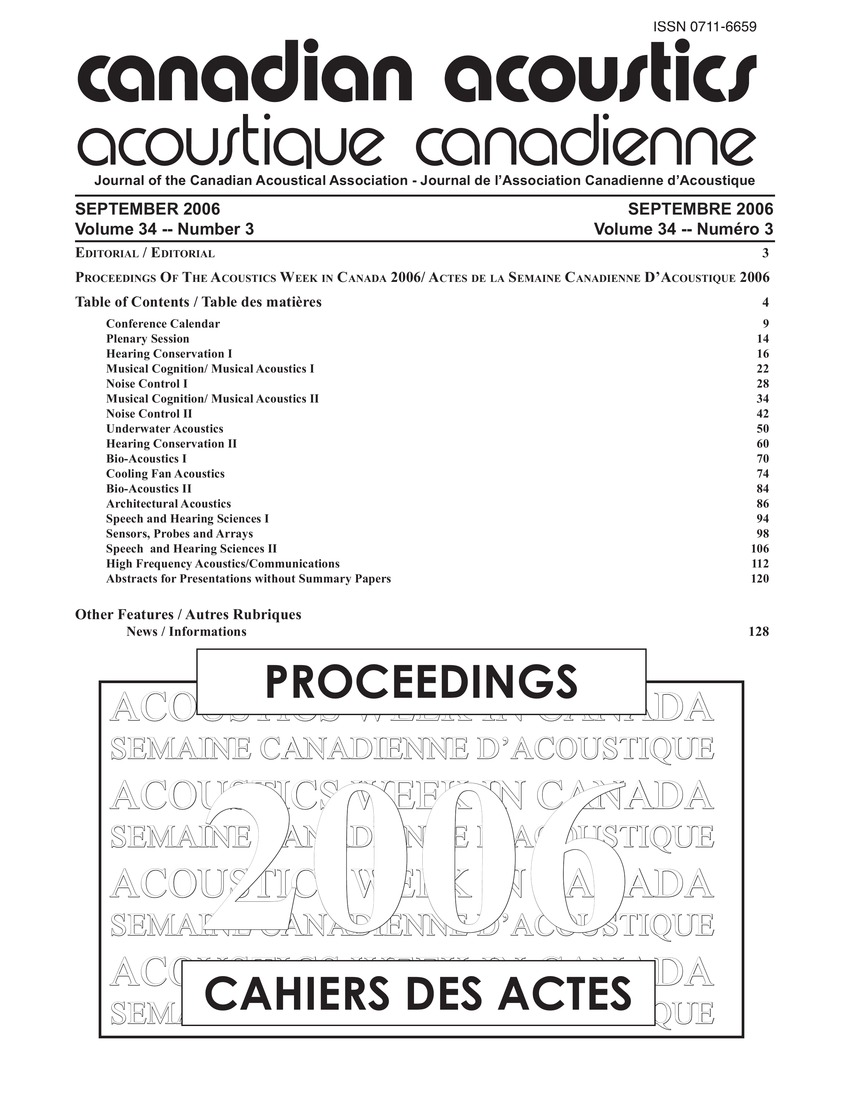The effect of ancillary volume on sound transmission measurements using ASTM standard test method E336
Mots-clés :
Absorption, Acoustic variables measurement, Parameter estimation, Signal receivers, Sound field measurements, Sound pressure, Sound transmissionsRésumé
The effects of ancillary volume on sound transmission measurements by ASTM Standar E336-05 to access airborne sound isolation, are described. The ancillary volume is required to be disregarded if the average sound pressure level in the ancillary volume is more than 6. Different field scenarios are simulated using the four-room Flanking Transmission Facility at the NCR/IRC. The effect is considerably less when the ancillary volume is highly absorptive relative to the receive room principal volumes. The difference in the ALT with and without an ancillary volume is a function of two parameters. The first one is space-average level between the principal and ancillary volumes, and the second is sound field measurements associated with the ancillary volume. Estimates of the ALT is obtained using sound field measurements restricted to the principal volume when the difference in space average level between the principal and ancillary volume is more than 4 dB.Fichiers supplémentaires
Publié-e
Comment citer
Numéro
Rubrique
Licence
Author Licensing Addendum
This Licensing Addendum ("Addendum") is entered into between the undersigned Author(s) and Canadian Acoustics journal published by the Canadian Acoustical Association (hereinafter referred to as the "Publisher"). The Author(s) and the Publisher agree as follows:
-
Retained Rights: The Author(s) retain(s) the following rights:
- The right to reproduce, distribute, and publicly display the Work on the Author's personal website or the website of the Author's institution.
- The right to use the Work in the Author's teaching activities and presentations.
- The right to include the Work in a compilation for the Author's personal use, not for sale.
-
Grant of License: The Author(s) grant(s) to the Publisher a worldwide exclusive license to publish, reproduce, distribute, and display the Work in Canadian Acoustics and any other formats and media deemed appropriate by the Publisher.
-
Attribution: The Publisher agrees to include proper attribution to the Author(s) in all publications and reproductions of the Work.
-
No Conflict: This Addendum is intended to be in harmony with, and not in conflict with, the terms and conditions of the original agreement entered into between the Author(s) and the Publisher.
-
Copyright Clause: Copyright on articles is held by the Author(s). The corresponding Author has the right to grant on behalf of all Authors and does grant on behalf of all Authors, a worldwide exclusive license to the Publisher and its licensees in perpetuity, in all forms, formats, and media (whether known now or created in the future), including but not limited to the rights to publish, reproduce, distribute, display, store, translate, create adaptations, reprints, include within collections, and create summaries, extracts, and/or abstracts of the Contribution.


